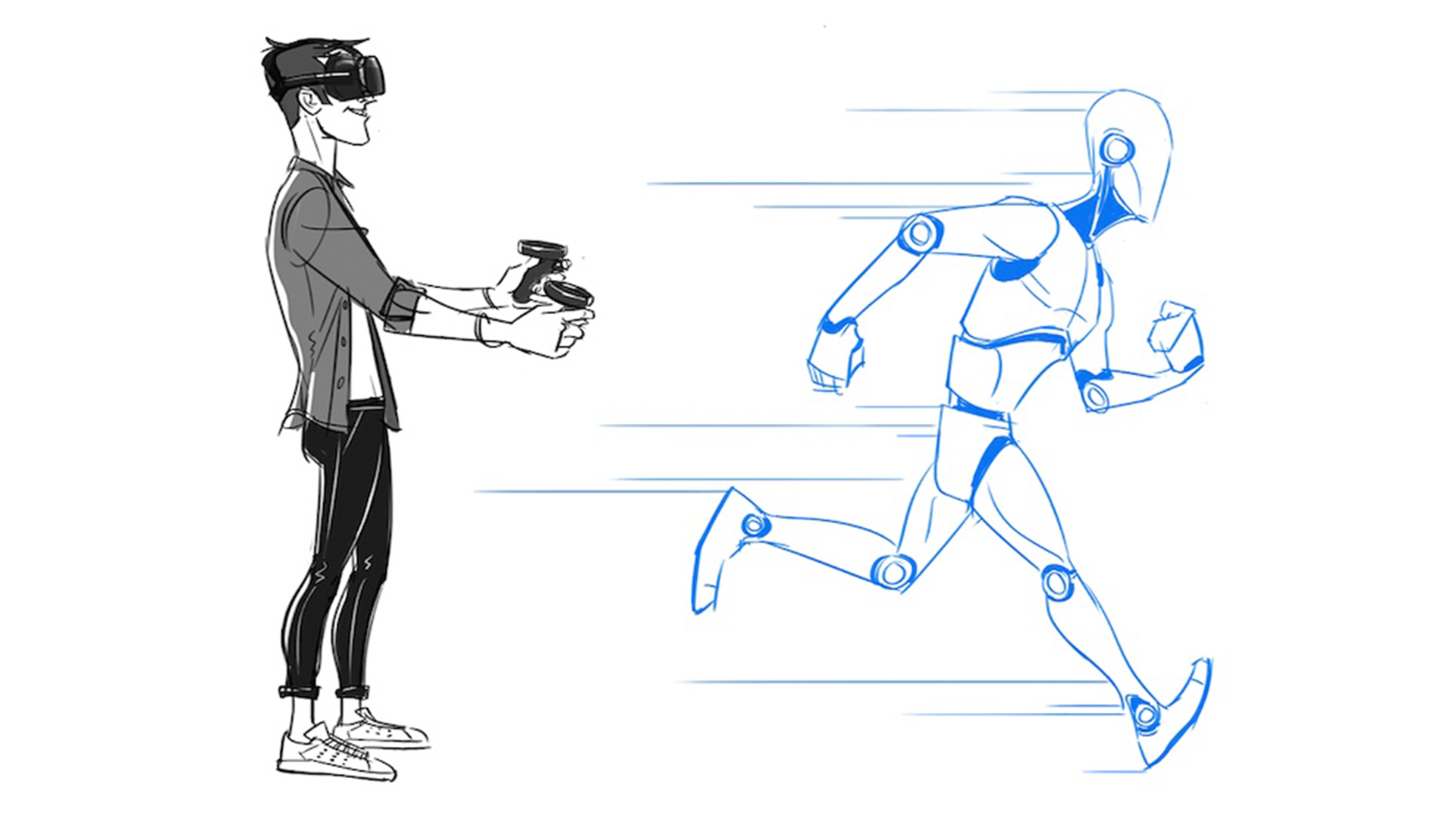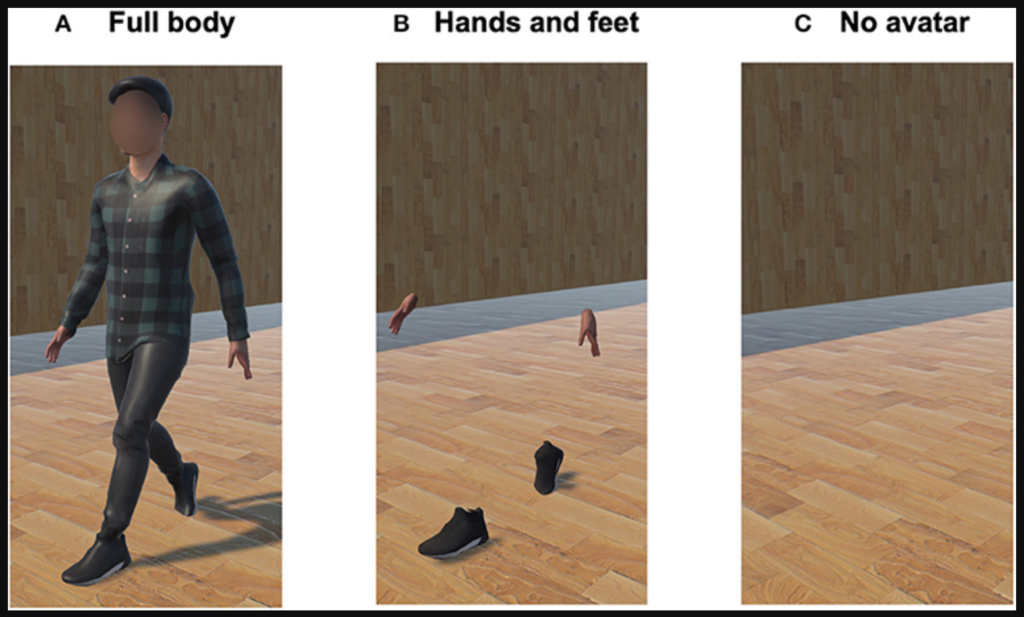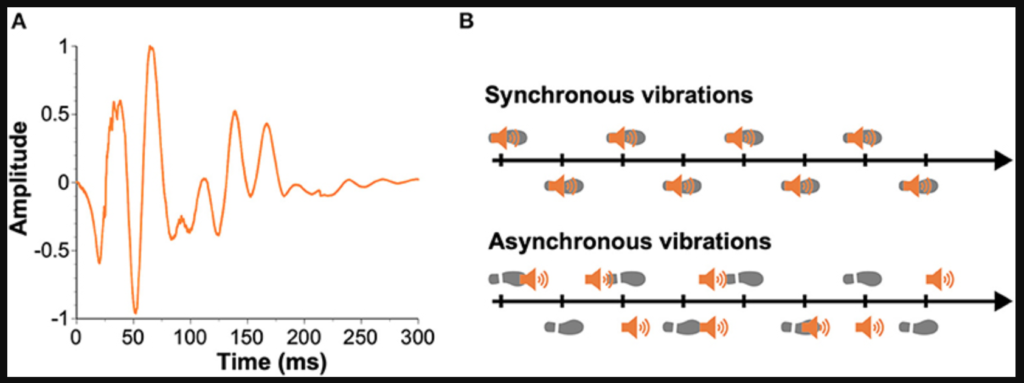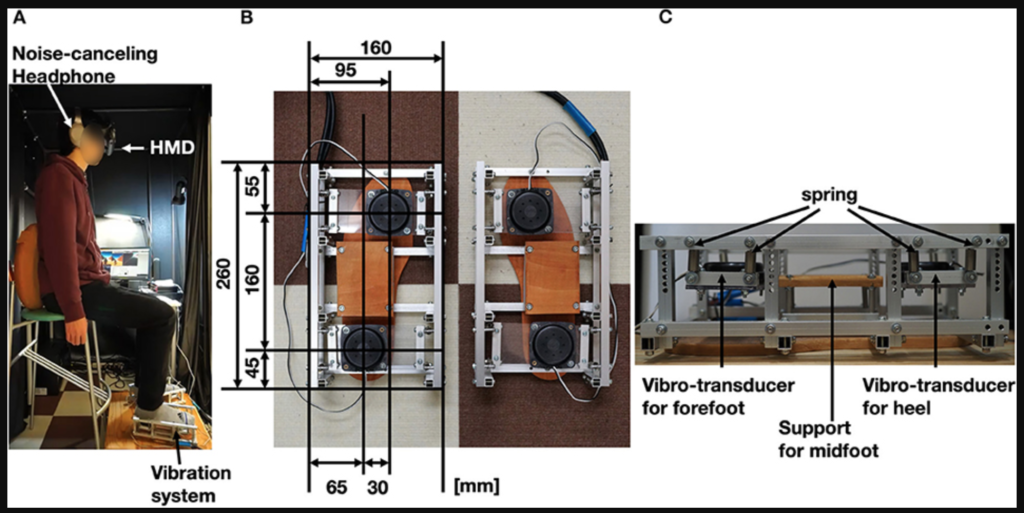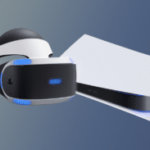A new experiment shows how haptic vibrations can have a dramatic impact on VR locomotion.
When it comes to simulating movement in VR, you have two primary options: teleportation or free locomotion. New technology, however—such as Cybershoes and omnidirectional treadmills like the Virtuix Omni One—are taking VR locomotion to the next level by allowing players to physically move throughout their VR environments while remaining stationary. Location-based entertainment ups the ante even further, offering dedicated playspaces complete with haptic technology that allow players to physically interact with the in-game world.
According to a recently published paper, Japanese researchers have come up with yet another method for VR locomotion that uses foot vibrations to simulate movement, even while seated.
The paper details an experiment in which a team of researchers from the Toyohashi University of Technology and the University of Tokyo divided participants into different three groups. Group A was equipped with full-body avatars that included both hands and feet. Group B, on the other hand, saw only their hands and feet. Group C had no avatars at all. Now, this is where things get interesting. Each of the participants had their feet placed into haptic devices made up of aluminum frames, vibro-transducers, acrylic plates, springs, and wood plates, that would vibrate the front and the back heel individually to create a sense of movement while in VR.
During testing, members of each group followed a computer-generated avatar through a virtual environment. With each step they took, participants experienced subtle vibrations designed to simulate the feeling of walking on an asphalt-paved road.
Each group participated in two experiments. Experiment 1 had individuals moving in VR from a first-person perspective. Experiment 2, on the other hand, had them walking in VR from a third-person perspective behind their in-game avatar.
At the end of each trial, participants were then asked to describe their individual experiences in four areas:
- I felt that my entire body was moving forward (self-motion).
- I felt as if I was walking forward (walking sensation).
- I felt as if my feet were striking the ground (leg action).
- I felt as if I was present in the scene (telepresence).
According to participants, Experiment 1 (first-person perspective combined with feet vibration) actually enhanced the sensation of walking, leg action, and telepresence. Experiment 2 (third-person perspective combined with feet vibration), on the other hand, reportedly impaired their sensation of self-motion and telepresence in comparison to the no-avatar condition.
While it’s unlikely that we’ll be seeing a consumer release of these haptic shoes anytime soon, the study does show that it is possible to convince your brain that you’re physically moving throughout a VR environment from a seated position, opening up a wide range of possibilities when it comes to training, education, physical therapy, gaming, and so much more.
For more information check out the published paper here.
Feature Image Credit: Toyohashi University of Technology, University of Tokyo
The post Researchers Simulate Walking In VR Using Foot Vibrations appeared first on VRScout.
